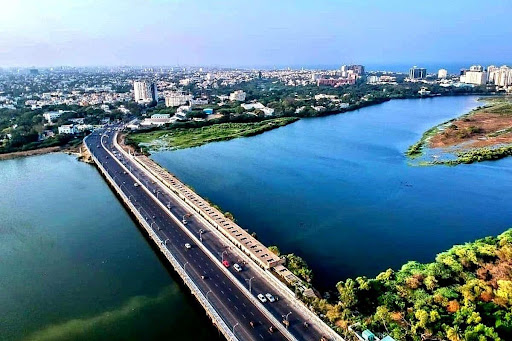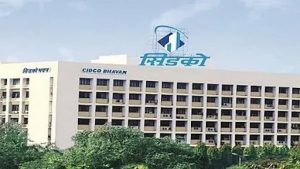Chennai is gearing up for a major urban transformation. The Chennai Metropolitan Development Authority (CMDA) is finalising nearly 15 critical studies that will form the foundation of the Third Master Plan (2027–2046) for the Chennai Metropolitan Area (CMA). These studies are expected to conclude by November 2025, marking a crucial step toward shaping Chennai into a modern, inclusive, and globally competitive city.
Also Read: Chennai Property Tax 2025: Pay Property Tax in Chennai Online Using TNUrban Epay
What Is the Third Master Plan All About?
A city master plan serves as a detailed roadmap for future growth and development — outlining land use, infrastructure, transportation, housing, and civic amenities. Chennai’s upcoming master plan aims to address pressing urban challenges such as traffic congestion, infrastructure strain, and environmental sustainability, while also promoting economic growth and equitable urban development.
The Area Under CMDA’s Focus
The Chennai Metropolitan Area (CMA) currently spans 1,189 sq. km, covering:
- Chennai Corporation
- 8 Municipalities
- 11 Town Panchayats
- 179 Villages under 10 Panchayat Unions
Although the Tamil Nadu Government had earlier approved extending CMDA’s jurisdiction to 5,904 sq. km, the Third Master Plan will primarily focus on the existing 1,189 sq. km. The remaining area will be covered under a Regional Strategic Plan, addressing the broader metropolitan expansion.
Also Read: How to Check RERA-Registered Projects in Chennai?
Separate Plans for Emerging Growth Corridors
To ensure balanced development, dedicated master plans are being prepared for satellite towns and growth centres such as:
- Thirumazhisai
- Kancheepuram
- Chengalpattu
- Minjur
- Tiruvallur
These areas are expected to evolve as economic and residential hubs, reducing the urban pressure on Chennai city limits.
A Strong Emphasis on Economic Zoning
One of the standout aspects of the upcoming plan is its economic orientation. CMDA is mapping key priority zones and investment corridors, identifying where industries, commercial spaces, and employment clusters can flourish. This approach aims to strengthen Chennai’s position as a major economic engine in South India.
The Indian Institute for Human Settlements (IIHS) is collaborating with CMDA to conduct spatial distribution analyses based on employment and income categories — ensuring that development benefits are socially and geographically equitable.
Addressing Flood Control and Environmental Sustainability
Learning from Chennai’s past flood crises, CMDA is also integrating flood management and climate resilience into the plan. A major component is the study titled “Formulation of Comprehensive Flood Control Master Plan in Urbanized River Basins in Chennai”, a joint initiative between the Japan International Cooperation Agency (JICA) and the Greater Chennai Corporation (GCC).
Key agencies involved include:
- CMDA
- GCC (Greater Chennai Corporation)
- DRRA (Disaster Risk Reduction Agency)
- WRD (Water Resources Department)
JICA will oversee the terrain and runoff mapping, helping to establish buffer zones around water bodies and flood-prone regions.
Also Read: Brigade Group Strengthens Its Foothold in Chennai with ₹441 Crore Land Acquisition for Premium Housing Project
Focus on Blue-Green Infrastructure (BGI)
CMDA’s research also extends to strengthening Blue-Green Infrastructure (BGI) — integrating natural ecosystems (like rivers, wetlands, and parks) with urban infrastructure. This will help the city:
- Improve flood resilience
- Enhance climate adaptability
- Promote urban biodiversity
- Ensure sustainable water management
Officials noted that similar efforts in flood-sensitive zones such as Velachery have shown encouraging results, with Perumbakkam next in line for such interventions.
Also Read: Patta Chitta Online Land Records 2025: How to Apply, Register, and Check Fees
What This Means for Chennai’s Future
Once completed, the Third Master Plan will serve as a guiding document for Chennai’s growth until 2046 — fostering sustainable urbanization, efficient transport systems, and balanced development between the city and its suburbs. The initiative reflects Tamil Nadu’s broader vision to transform Chennai into a resilient, smart, and livable global metropolis.
Chennai is gearing up for a major urban transformation. The Chennai Metropolitan Development Authority (CMDA) is finalising nearly 15 critical studies that will form the foundation of the Third Master Plan (2027–2046) for the Chennai Metropolitan Area (CMA). These studies are expected to conclude by November 2025, marking a crucial step toward shaping Chennai into a modern, inclusive, and globally competitive city.
Also Read: Chennai Property Tax 2025: Pay Property Tax in Chennai Online Using TNUrban Epay
What Is the Third Master Plan All About?
A city master plan serves as a detailed roadmap for future growth and development — outlining land use, infrastructure, transportation, housing, and civic amenities. Chennai’s upcoming master plan aims to address pressing urban challenges such as traffic congestion, infrastructure strain, and environmental sustainability, while also promoting economic growth and equitable urban development.
The Area Under CMDA’s Focus
The Chennai Metropolitan Area (CMA) currently spans 1,189 sq. km, covering:
- Chennai Corporation
- 8 Municipalities
- 11 Town Panchayats
- 179 Villages under 10 Panchayat Unions
Although the Tamil Nadu Government had earlier approved extending CMDA’s jurisdiction to 5,904 sq. km, the Third Master Plan will primarily focus on the existing 1,189 sq. km. The remaining area will be covered under a Regional Strategic Plan, addressing the broader metropolitan expansion.
Also Read: How to Check RERA-Registered Projects in Chennai?
Separate Plans for Emerging Growth Corridors
To ensure balanced development, dedicated master plans are being prepared for satellite towns and growth centres such as:
- Thirumazhisai
- Kancheepuram
- Chengalpattu
- Minjur
- Tiruvallur
These areas are expected to evolve as economic and residential hubs, reducing the urban pressure on Chennai city limits.
A Strong Emphasis on Economic Zoning
One of the standout aspects of the upcoming plan is its economic orientation. CMDA is mapping key priority zones and investment corridors, identifying where industries, commercial spaces, and employment clusters can flourish. This approach aims to strengthen Chennai’s position as a major economic engine in South India.
The Indian Institute for Human Settlements (IIHS) is collaborating with CMDA to conduct spatial distribution analyses based on employment and income categories — ensuring that development benefits are socially and geographically equitable.
Addressing Flood Control and Environmental Sustainability
Learning from Chennai’s past flood crises, CMDA is also integrating flood management and climate resilience into the plan. A major component is the study titled “Formulation of Comprehensive Flood Control Master Plan in Urbanized River Basins in Chennai”, a joint initiative between the Japan International Cooperation Agency (JICA) and the Greater Chennai Corporation (GCC).
Key agencies involved include:
- CMDA
- GCC (Greater Chennai Corporation)
- DRRA (Disaster Risk Reduction Agency)
- WRD (Water Resources Department)
JICA will oversee the terrain and runoff mapping, helping to establish buffer zones around water bodies and flood-prone regions.
Also Read: Brigade Group Strengthens Its Foothold in Chennai with ₹441 Crore Land Acquisition for Premium Housing Project
Focus on Blue-Green Infrastructure (BGI)
CMDA’s research also extends to strengthening Blue-Green Infrastructure (BGI) — integrating natural ecosystems (like rivers, wetlands, and parks) with urban infrastructure. This will help the city:
- Improve flood resilience
- Enhance climate adaptability
- Promote urban biodiversity
- Ensure sustainable water management
Officials noted that similar efforts in flood-sensitive zones such as Velachery have shown encouraging results, with Perumbakkam next in line for such interventions.
Also Read: Patta Chitta Online Land Records 2025: How to Apply, Register, and Check Fees
What This Means for Chennai’s Future
Once completed, the Third Master Plan will serve as a guiding document for Chennai’s growth until 2046 — fostering sustainable urbanization, efficient transport systems, and balanced development between the city and its suburbs. The initiative reflects Tamil Nadu’s broader vision to transform Chennai into a resilient, smart, and livable global metropolis.







